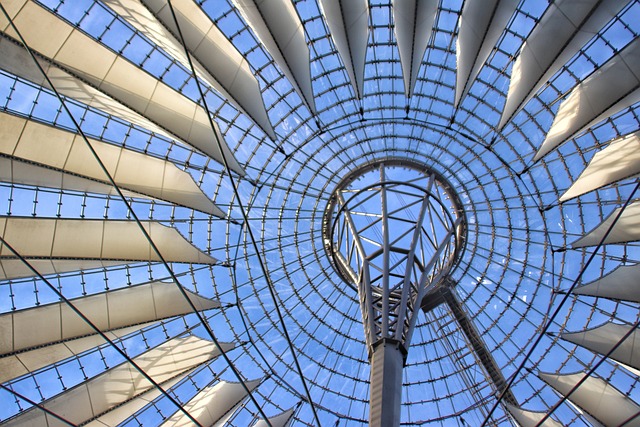Polycarbonate Sheets: Uses, Properties, and Applications
Polycarbonate sheets are a versatile glazing material used across construction and architecture for their combination of light weight, impact resistance, and formability. They come in several formats — solid, multiwall, and corrugated — and are chosen where transparent or translucent coverage is needed without the weight and fragility of glass. This article explains how polycarbonate performs in building and roof applications, what to consider during specification and installation, and how designers use it in contemporary architecture.

Polycarbonate: material properties and types
Polycarbonate is an amorphous thermoplastic known for high impact strength, dimensional stability, and good optical clarity for many grades. Sheets are typically offered as solid (flat, sheet-like), multiwall (cellular sheets that trap air for insulation), and corrugated (profiled for compatibility with roofing systems). Many polycarbonate products include UV-stabilized surface layers to reduce yellowing and surface degradation from sunlight. Thermal expansion, chemical resistance limits, and scratch susceptibility vary by grade and surface treatment, so selecting the right type depends on the application environment.
Polycarbonate can be thermoformed, extruded, or cut on-site, which makes it adaptable to curved elements and complex geometries. Additives can provide flame retardance, color, or light-diffusing properties. Because physical and performance characteristics differ between manufacturers and product lines, consult technical datasheets for properties such as service temperature range, light transmission, and recommended spanning supports.
How polycarbonate is used in construction
In construction, polycarbonate is used where a balance of transparency, safety, and weight savings is needed. Typical uses include skylights, canopies, sunrooms, balustrade infill, internal partitions, and protective glazing. Multiwall sheets are common where thermal insulation matters, while solid polycarbonate is selected for high-impact requirements and visual clarity.
Specifiers consider U-values (for insulation), visual light transmission, acoustic performance, and fire classification relevant to local codes. Attachment systems, gaskets, and sealants designed for polycarbonate help manage movement and maintain weather resistance. Coordination with structural framing, flashings, and drainage paths is important to avoid water ingress and to accommodate thermal movement during seasonal temperature shifts.
Polycarbonate for roof applications: benefits and limits
Polycarbonate roofs offer daylighting benefits, reducing reliance on artificial lighting while maintaining weather protection. Multiwall polycarbonate provides insulating air cavities that improve thermal performance compared with single-layer glazing and reduce condensation risk when installed correctly. Corrugated polycarbonate sheets match many metal roofing profiles and are used for lean-tos, pergola covers, and industrial canopies.
Limitations include potential for surface scratching, some reduction in optical clarity over long exposure if UV protection is absent, and higher thermal expansion than glass or metal — which requires detailing for movement. For roofs, proper overlap, end-seals, ridge caps, and vapor barriers reduce moisture buildup. Fasteners should use neoprene or EPDM washers and allow for movement; rigid over-tightening can cause stress cracking.
Polycarbonate in building design and installation
In building projects, polycarbonate simplifies installation because panels are lighter and easier to handle than glass. Cutting and drilling are typically done with standard woodworking tools, and specialized snap-in glazing systems reduce labor. For vertical applications such as façades or partitions, back-ventilated mounting and robust edge finishes help prolong service life.
Designers should specify compatibility of fixings and sealants, allow recommended edge clearances, and consider protective films during construction to prevent abrasion. Maintenance is straightforward: cleaning with mild detergent and soft cloths; avoid abrasive cleaners or solvents that can damage the surface treatment. Long-term performance depends on correct detailing at perimeters and interfaces to prevent water traps and mechanical stress.
Polycarbonate in contemporary architecture
Architects use polycarbonate to achieve diffused daylighting, lightweight canopies, and expressive forms that would be difficult with heavier glazing. Its translucency allows soft, uniform illumination for interior spaces, and colored or textured grades can add visual interest while managing glare. Because sheets can be curved, they suit vaulted roofs, barrel vaults, and freeform façades that call for consistent light transmission across a surface.
Sustainability considerations include the potential for reuse or recycling of polycarbonate in some markets; recycled content and take-back programs vary by supplier. When specifying for sustainable projects, ask manufacturers about embodied carbon data, recyclability, and long-term durability to assess life-cycle impacts. Integration with shading, daylight controls, and thermal strategies supports occupant comfort and energy goals.
Conclusion
Polycarbonate sheets offer a practical combination of light transmission, impact resistance, and formability that suits many construction, roof, and architectural applications. Correct selection between solid, multiwall, and corrugated types, attention to UV protection and edge detailing, and careful specification of fixings and sealants are key to achieving durable, effective installations. When chosen and installed with these considerations in mind, polycarbonate can deliver daylighting, weather protection, and design flexibility in a wide range of building projects.






